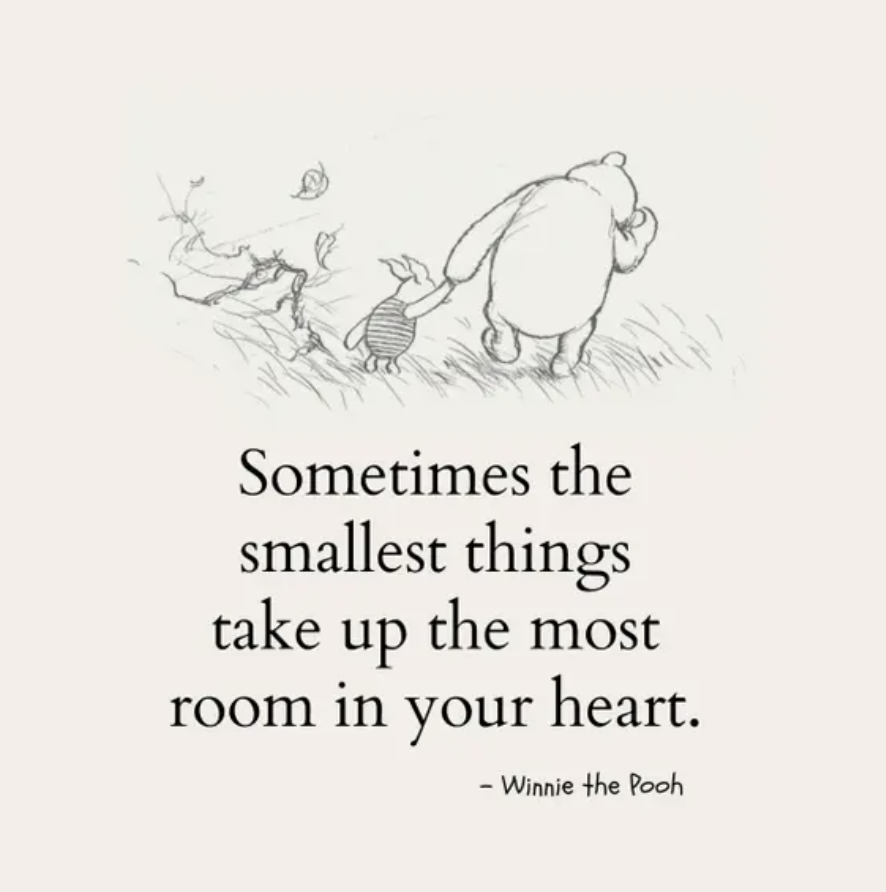
In the enchanted world of children’s literature, a few household names stand out to the average reader. Not many of them evoke the same sense of nostalgia and peace in us as A. A. Milne – the creator of Winnie-the-Pooh. On this the anniversary of his death, we wanted to take a look at what made Pooh, the endearing inhabitants of the Hundred Acre Wood, and A. A. Milne unique, and how he crafted stories that continue to this day to captivate generations both young and old.
Born on January 18, 1882, Alan Alexander Milne lived a relatively peaceful childhood. He was brought up in London, attended the small independent school his father ran (fun fact: at one point H.G. Wells was one of Milne’s teachers!), and then went on to the Westminster School and to Trinity College, Cambridge where he received a B.A. in Mathematics. He was a talented cricket player and played on a couple different teams, one of which was the Allahakbarries, Peter Pan author J. M. Barrie’s cricket team (along with teammates such as Arthur Conan Doyle and P.G. Wodehouse). To say that Milne was privileged and knew all the right people to join the literary scene was an understatement!

After his graduation, Milne wrote humorous essays and articles for Punch magazine. While working for Punch, he published 18 plays and three novels, all of which were well received (even if they did not achieve the literary acclaim that Pooh did, years later). In 1913 he married, and in 1920 his son, Christopher Robin, was born. Milne served in both WWI and later WWII, and considered himself a very proud Englishman.
After a successful career as a playwright and humorist, Milne turned to his son Christopher Robin for inspiration in his next work. Not yet called “Pooh”, Christopher Robin’s bear first appeared in Milne’s poem “Teddy Bear” in Punch magazine in 1924. He then appeared on Christmas Eve in 1925, in the London Evening News in a short story. Winnie-the-Pooh, however, made headlines in the first book about him, published in 1926, when Christopher Robin was six years old. Two years later, Milne published The House at Pooh Corner, the second book set in the Hundred Acre Wood. Throughout this time, Milne continued working on other things, and even published four plays in these “Pooh” years.
Both Milne and Christopher Robin’s relationship with Winnie-the-Pooh was strained. During his childhood years, they enjoyed a close personal relationship. However, soon A. A. Milne found himself disappointed that his childish work was overshadowing the multitude of other works he had created over the years. He hated the constant demand for more Pooh stories, and he wished to be taken more seriously as an author than he felt he was. On Christopher Robin’s part, he was relentlessly bullied at school for being the Christopher Robin, and ended up resenting his father for trapping him forever in association with the popular children’s story. We like to think that this bit of Pooh’s history reminds us that art and life aren’t always two completely separate things.
That being said, how has Pooh pulled on our heartstrings the way he has, for almost a hundred years now? We believe that the simplicity and innocence of the Hundred Acre Wood, which is an idyllic place in and of itself, serves as a safe refuge for us, even in our imaginations. The gentle humor and (often pretty profound) wisdom of the books invites all ages to enjoy them. Pooh himself reminds us of the joy of simple pleasures – from a jar full of honey to a day out with a good friend.
As we celebrate the life and legacy of A. A. Milne and Winnie-the-Pooh, we are reminded in an often chaotic and uncertain world to cherish moments of joy, embrace our sense of childish wonder, and hold fast to our friendships – for these are the things that will sustain us through rough times.

